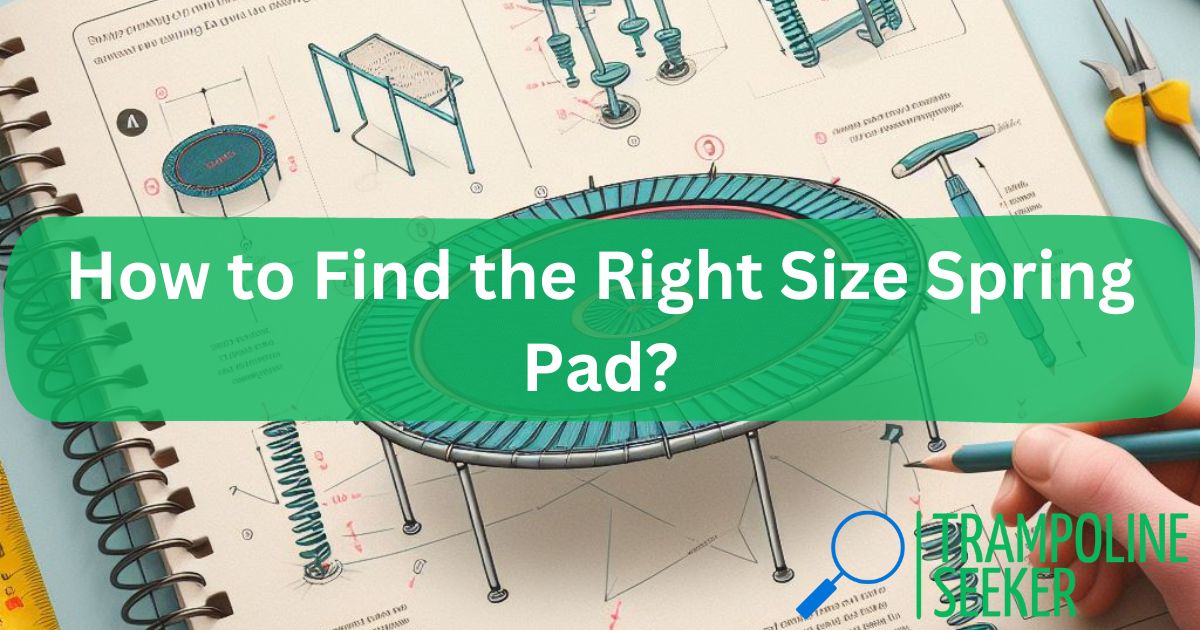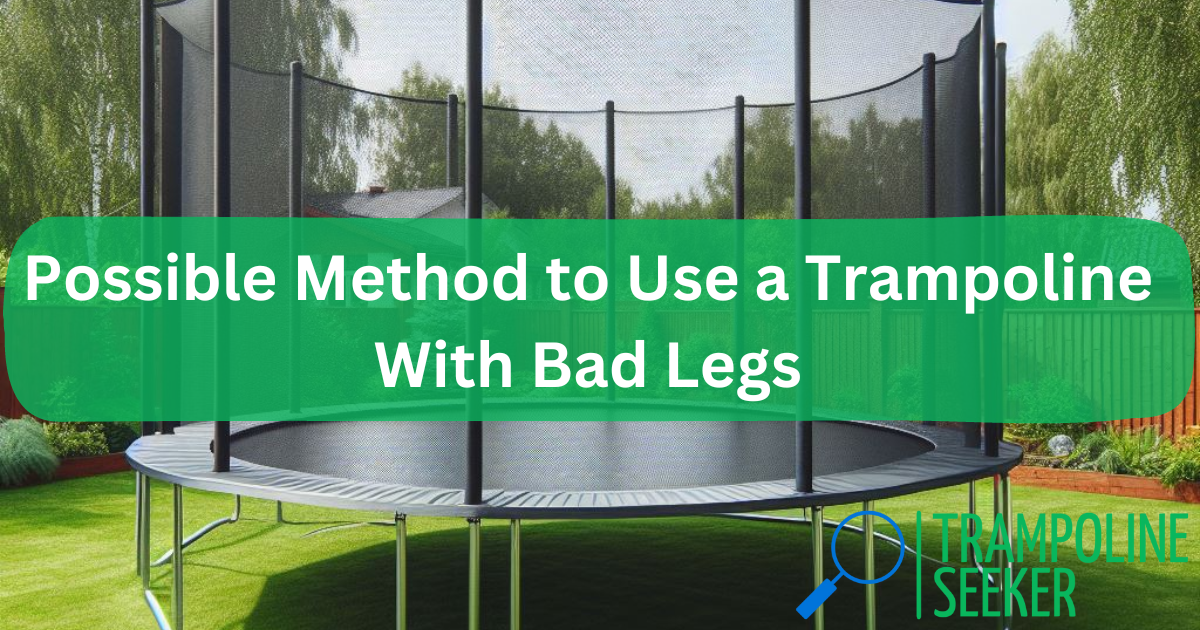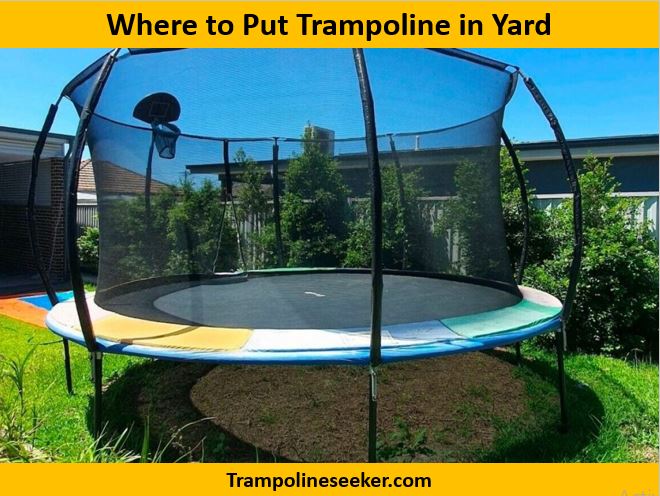So you’ve decided to put up an in-ground trampoline in your backyard. You’ve evaluated the expenditures and the difficulties you’ll encounter when digging your trampoline pit, and you still think it’s a smart idea.
The advantages of owning an in-ground trampoline much outweigh the disadvantages. You will receive plenty of exercise, enhance your health, and have a terrific time. These advantages will assist you in overcoming the challenges that may occur when you start out to build your new in-ground trampoline. Lets discuss more about How to Dig a Hole for A Trampoline?
Before You Begin Digging Your Pit
Before you dig with your shovel, there are three things you must do.
Know The Size of Your Yard and What Is in It
One of the most important aspects of installing an in-ground trampoline is determining if your yard is large enough to accommodate one. Then you must inspect your yard to determine where it may securely go. You may need to uproot trees and plants, relocate a shed or garden, and so on.
Determine The Size of Your Trampoline
It goes without saying that you cannot begin excavating until you have determined the size of the trampoline. Before you begin your own excavation, you must first make this decision. Once you’ve determined the diameter, you’ll need to add an extra foot to account for the ventilation you’ll want.
Contact Your City Hall
Before you do anything else, you will need to gather information on your backyard. You must know where to dig, whether it is safe to dig, and the location of any pipelines, including your own sewer and water lines. You should also find out if you need a permission to build an in-ground trampoline.
Outer and Inner Hole Diameters of Rectangular Trampolines
If you thought digging a circle hole was enjoyable, wait till you see how much labour goes into excavating a rectangle hole. Here are the dimensions for the various trampoline sizes. The 8 foot is not included here, and the outside hole size is calculated by adding 20 cms to the inner hole figures:
- 10 by 6-foot trampoline – the inner hole should be 8 by 4 foot
- 11 by 8-foot trampoline – the inner hole should be 9 by 6 feet
- 14 by 10-foot trampoline – the inner hole should measure 12 by 8 feet
Again, depending on the kind of trampoline you purchase, these sizes may vary.
Outer and Inner Hole Diameters of Round Trampolines
You may have assumed that you were just digging one hole, but this is not the case. There are two holes that must be excavated in order to correctly install an in-ground trampoline.
The outside hole will be shallower than the inner hole. In reality, just 13 inches of digging is required to reach the proper depth for the outside hole. This is essentially the same dimension for trampolines with diameters of 8, 10, 12, and 14.
The inner diameter hole is less fortunate. Each size of trampoline has a distinct inner diameter measurement. The inner hole should be 2 feet smaller in diameter than the trampoline’s actual diameter.
As an example, A 6′ diameter inner hole is required for an 8′ diameter trampoline. An 8′ inner hole is required for a trampoline with a diameter of 10′. The 12′ requires a 10′ inner hole, while the 14′ requires a 12′ inner hole.
The difference forms a good ledge on which to build your retaining wall. Of course, the outer and inner diameter sizes are not absolute, and certain trampolines may require deviations from the given values.
Keep in mind that digging a precise circular hole is quite tough. It should be fine if yours is a touch irregular in diameter. Just don’t stray too far from the mark. Just follow the one-foot additional guideline and you should be OK.
Then, when you’ve done digging the outside hole, start digging the inside one.
Digging A Trampoline Pit
If you’re going to do it yourself, knowing how to dig the proper size hole with the right proportions is always useful. It is not as simple as picking up a shovel and started digging.
It takes some finesse to get the hole just perfect. Here are some recommendations for both circular and rectangular holes:
- Mark out your hole, making sure to allow for a 1-foot excess diameter.
- Dig the exterior hole first, about 14 inches down.
- Mark out your inner hole, keeping in mind that it should be 2 feet smaller than the actual trampoline size. You may need to come in 3 feet to acquire the proper hole size.
- Make a bowl-shaped inner hole. This ensures that there is enough space at the bottom of the bounce.
- You should also have a 12-inch ledge. The trampoline’s legs are perched on this ledge.
- If necessary, include drainage.
This task does not require a lot of equipment. Here’s a rundown:
- String and stakes
- Tape measure
- Hammer
- Shovel(s)
- Carpenter’s level
- Rake
You may rent a tiny digger to speed up the digging process depending on the size of the hole you’re excavating and if you don’t want to shovel a lot of dirt. You should be able to dig the hole manually in 8 to 10 hours.
How Deep Should a Trampoline Pit Hole Be?
This is a major worry since you need to ensure that you have the proper depth for a variety of reasons. The main reason you need to obtain the proper depth is so you can land and bounce back up. The sensation of hitting the earth is unpleasant.
The Circular Trampoline’s Inner Hole Depth
- 8-foot trampoline- 29 inches’ deep
- 10-foot trampoline- 29 inches’ deep
- 12-foot trampoline – 36 inches’ deep
- 14-foot trampoline – 36 inches’ deep
The depth of the outside diameter hole is the same for all four trampoline sizes. The hole should be 35 cm deep. A 30 cm ledge should also be present surrounding the hole.
The Rectangular Trampoline’s Inner Hole Depth
10 by 6-foot trampoline – 30 inches’ deep
11 by 8-foot trampoline- 30 inches Deep
14 by 10-foot trampoline- 36 inches’ deep
How to Shape the Hole?
Some individuals do not form their trampoline holes, which is a bad idea. A sloppy hole might mess up your retaining wall dimensions and arrangement. It can also have an impact on drainage by keeping loose soil where it can fall and clog your drainage system.
It will be tough to smooth off the edges and ledge of a circular hole using a long, straight 2 by 4. A square-headed shovel or trowel will perform the job swiftly. You want to come as near to a circular shape as possible.
A little 1 by 2, 2 by 2, or 2 by 4 can also assist you form the hole to the desired size. Depending on the size of your hole, this task might take you 1 to 3 hours.
Pros and Cons of Digging Options (Hand Vs Mini-Digger)
Using a mini-digger is always going to be better, easier, and faster in most circumstances. It will save you a lot of time and energy, making the installation of your in-ground trampoline much easier.
However, mini-diggers are not necessarily the greatest equipment to use once you’ve completed the basic job and need to accomplish the finer details, such as contouring a hole. Here are the advantages and disadvantages of both types of digging:
Using A Shovel
Pros:
- You maintain control; the only thing that works against you is fatigue.
- You can be more precise by digging the hole close to the exact size indicated by your drawing. Your shaping time can be cut down.
- You gain muscular mass, get plenty of exercise, and become healthy.
- You care about the environment since hand digging does not contaminate the ecosystem.
- You do not bother your neighbors; instead, you preserve the peace and ensure that your neighbors may enjoy their day as well.
Cons:
- Excavating takes longer; you may spend the entire day digging.
- It is not enjoyable- digging may get tedious and laborious, and you may lose your momentum.
- You might get harmed if your back gives out or if you hurl the dirt incorrectly and injure your knees, hips, or back.
- You could break your shovel if you run into a rock or a steel pipe.
The Mini-Digger
Pros:
- It saves you time since electricity is always faster than hand digging.
- You conserve energy since you are not performing the hard lifting.
- Takes out more dirt- you receive more shovelfuls of soil out of your hole.
- You can get the appropriate angles when you need them because you have good mobility.
- A superior perspective- you’re higher and can see what you’re doing.
Cons:
- Gates that are smaller than mini-diggers may not fit through.
- May be too large for your yard- your yard may be too tiny to accommodate a mini-digger.
- Uses fuel- you will be unfriendly to the environment by consuming fossil gases and polluting the air. It is costly to rent and operate.
- Very loud- you may disturb your neighbors
- It’s simple to make a mistake move a control rod too much or too little and you’ll muck up your hole, causing the installation to take longer.
Conclusion
Digging your hole sounds just as horrible as it is. However, if you want an in-ground trampoline, you will have to dig. The soil will not move on its own. Simply follow the easy instructions above to make digging easier on yourself and avoid ruining your outline.
Must Read:













